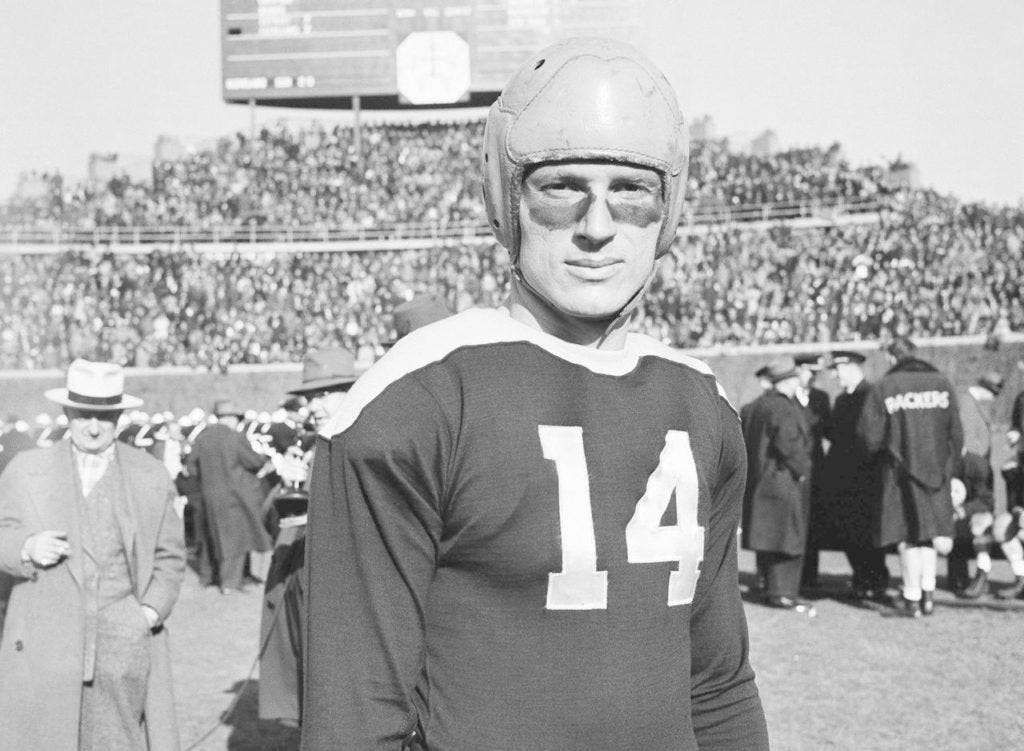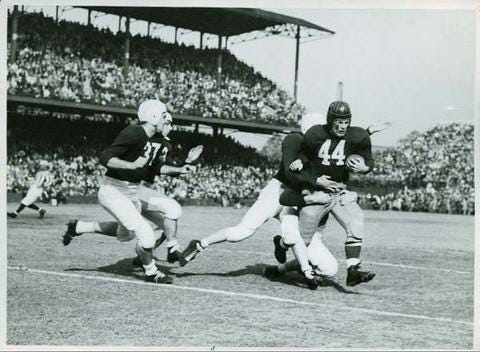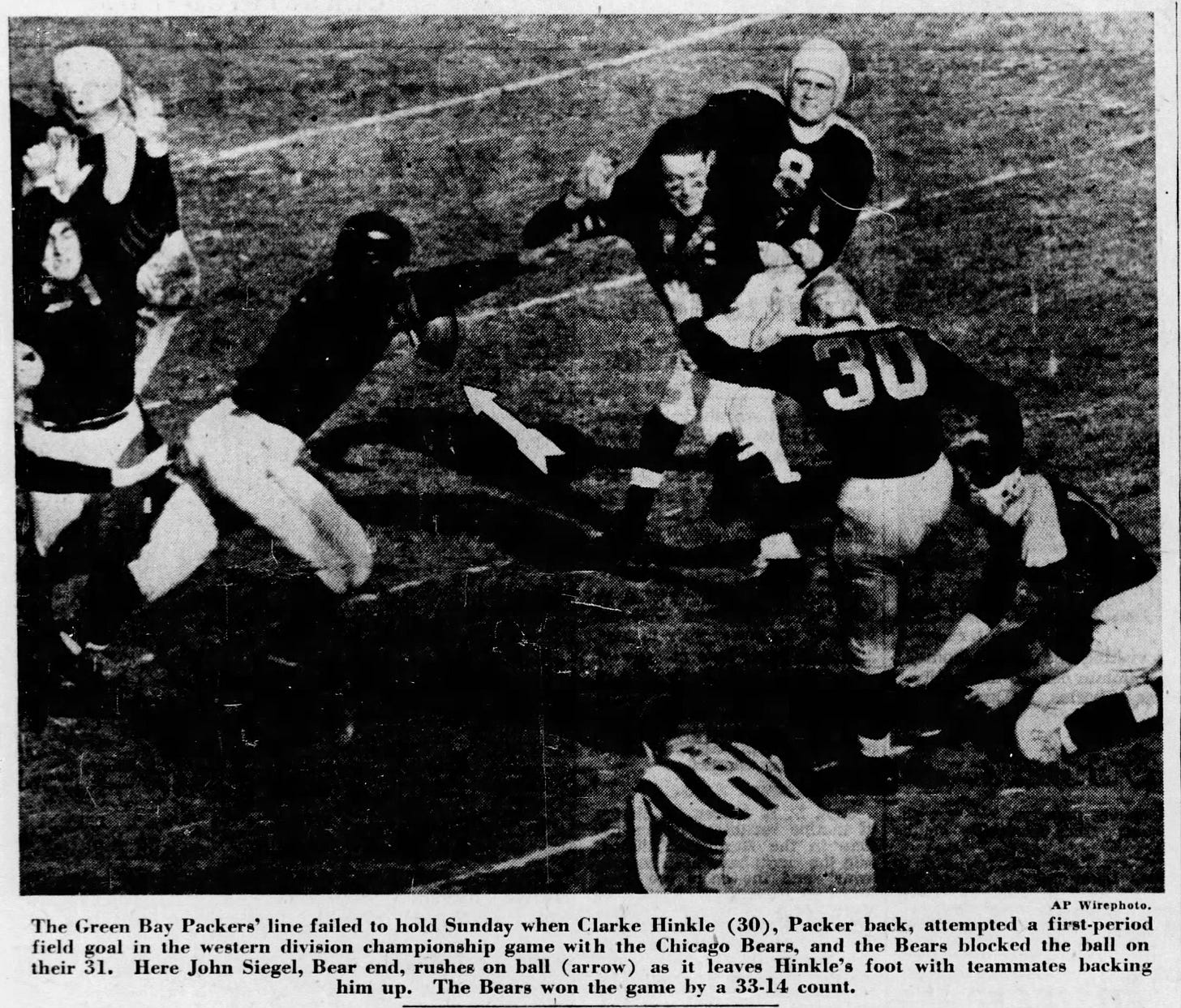Throwing Shade on the First Use of Eye Black
An incorrect, but widely cited claim, tells us Andy Farkas was the first sportsperson to wear eye black when he did so in 1942. The claim appears in many locations, including Wikipedia and the History page on the Farkas Eye Black site. The latter tells us:
The first officially recognized use of eye black in sports dates back to Andy Farkas, who donned burnt cork in 1942 as he helped lead the Washington Redskins to an NFL Championship. While eye black has long been popular in football, the product has been an anchor to success in many other sports, most notably baseball.
The site supports the claim using an undated image of Farkas wearing eye black.
However, a few minutes of research shows the claim is incorrect, as documented below.
Admittedly, identifying the first person to do one thing or another in sports can be challenging, and I will not claim to have identified the first to wear eye black, but I will provide documentary and photographic evidence showing Farkas was not the first sportsperson to use eye black, and he was not the first football player or the first NFL player to do so.
The earliest documentation of a football team wearing eye black is the 1911 Phillips Andover team. A top prep school, Andover had the resources of a cutting-edge team and access to top Eastern college teams such as Harvard, Princeton, and Yale, so it is possible the idea to use eye black originated with an Ivy. Still, the same article that discusses Andover's use indicates that wearing eye black was an "old device" among baseball players. It also notes that Sumner Paine, a Bostonian who won gold and silver in pistol shooting at the 1896 Olympics, wore eye black while competing. Both references suggest eye black was not the newest thing under the sun, even in 1911.
Elsewhere, the Cleveland Indians' Cupid Jones earns a mention in the mid-1910s for using eye black, as does Harold Pogue, Illinois' quarterback in 1914 and 1915. Eye black then went silent until Washington State visited Hawaii for the holidays in 1926. In those days, Hawaii was tough for football teams to reach during the regular season, and the Rose was the only bowl game, so one lucky mainland team sailed to battle the locals each year. Perhaps because eye black had not appeared on the islands before, the Honolulu Bulletin mentioned that: "The Washington State players looked mean with the dark stuff under their eyes. It is said they put it there to protect their eyes from the glare."
Eye black gets more attention in the 1930s. beginning with Harvard and Yale's teams wearing eye black for their 1931 game.





The information and images above show eye black usage before Andy Farkas in 1942, but could he still have been the first NFL player to do so? Unfortunately for Farkas fans, other NFL players wore eye black the year before Farkas donned the dark in 1942. (Someone may have used it earlier, but I stopped looking after finding an NFL player that preceded Farkas.)
The Chicago Cardinals beat the Chicago Bears in the 1941 regular-season finale, a game played while Japanese planes attacked Pearl Harbor. The Bears' loss created a tie with the Packers for the Western Division title, leading to a playoff game the following Sunday for the right to play the New York Giants in the title game.
The Bears stuffed the Packers 33-14 in the playoff game, and the rout included the blocked field goal captured in the image below. A close examination shows the Bears' Dick Plasman (#14) helmetless and donning eye black. (Why anyone would use eye black to enhance their performance while playing without a helmet is for others to determine.)
We also have a photo of Don Hutson wearing eye black at Wrigley Field while there for a playoff game with the Bears in 1941.

So that is that. An attempt to identify the origins of eye black among football players reveals periodic mention of eye black since 1911. However, it is not until the 1930s that we find photographic evidence of eye black use, likely due to cameras coming to market capable of taking high-speed images with zoom lenses.
Since then, players have continued using eye black despite little evidence of its efficacy. Many college players, particularly the ineligible-receiver linemen, wear it for decorative purposes, slathering their faces like Maori warriors. Their NFL counterparts use eye black only for functional reasons, facing fines when they move into decorative territory.
Football Archaeology is reader-supported. Click here to buy one of my books or otherwise support the site.



